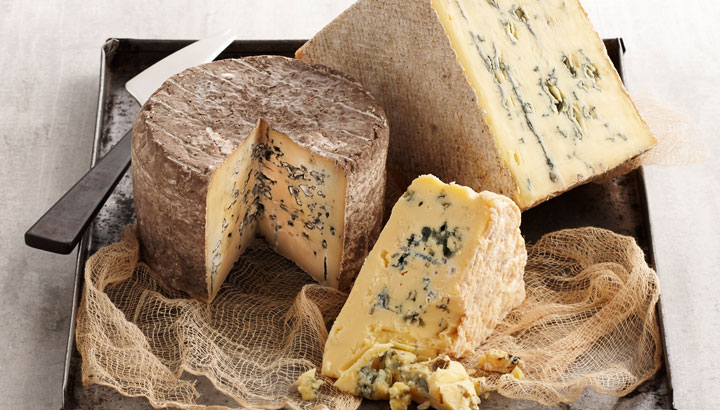
Blue cheese
What is blue cheese?
Blue cheese is a unique category of mould-ripened cheese with a pungent salty, piquant flavour. Its natural, crusty rind gives it a rustic appearance and develops as the cheese matures in humidity-controlled cellars. Currently more than 22 varieties of blue cheese are made in Australia.
Blue mould spores, Penicillum Roqueforti, are added to milk at the beginning of the cheesemaking process. After the curd is cut and whey drained, blue cheeses are not mechanically pressed but turned so the weight of the curd pushes out moisture. The curd remains loosely packed in hoops to leave room for the blue mould grow. The hoop size depends on the style of cheese being made and influences the cheese’s development. The next day, the cheese is salted and turned.
Stainless steel needles are used to pierce and aerate the cheese to assist the growth of blue cultures while the cheese matures. This process may be done from one to three times. Blue mould grows along the spike lines and into the smaller veins of the curd.
Each blue cheese style is made unique by the type and quantity of blue culture added to milk, the way the cheese is spiked (stitched), the size of the cheese and the way the cheese is matured.
There are multiple styles of blue cheese.
Types of blue cheese
Invented in the early 20th century in Denmark, this cheese carries a grey-blue rind and soft white interior with a dark blue mould. It has a sharp taste and a salty bite, occasionally with a hint of grittiness from the blue mould growth. It should be stored in its original wrapper or with foil.
A difficult cheese to make, blue brie uses two moulds. One blue mould naturally grows from the interior to the surface of the cheese, while a white mould (used to soften the intensity of the blue cheese flavour) grows naturally on the surface. It has a soft and creamy texture like brie, with a subtle blue flavour. Triple cream blue is a triple cream cheese with blue mould added. It should be stored in its original wrapper or foil.
This cheese is the oldest named blue cheese in the world. There are two different types: "piccante", which is quite strong and salty, and "dolce", which is sweet, mild and creamy. It is made in large wheels (between 6kg and 8kg) with a natural, crusty rind that is blue-grey and mottled with orange. A fully-developed Gorgonzola cheese will have earthy, spicy overtones and a fruitiness. It should be dry to slightly sticky, with evenly distributed blue veining and subtle marbling. It should be stored in foil or its original wrapper.